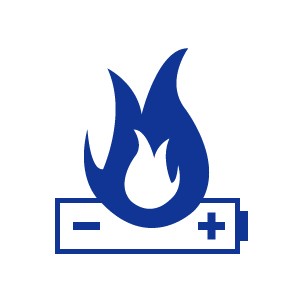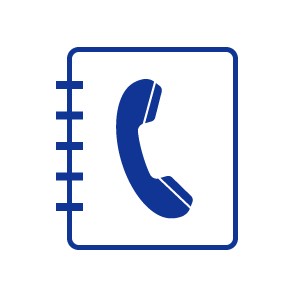The best time to prepare for emergencies is long before they happen. By rehearsing, you could save precious minutes, and possibly lives, instead of panicking.
Download our free Emergency Notification Form
After all, you never know how you’ll react when an emergency strikes. Will you be cool and collected in the face of potential casualties or will you let your emotions take hold, even though the incident may be as minor as a sprained ankle from a hangar slip or fall?
Here’s some things to consider to be prepared:
Know your ERP
In aviation, a variety of incidents can occur any time – and you may be the one being called on first. Having a well established Emergency Response Plan (ERP) (that you’ve tested with your team) will help to ensure you’ve learned ahead of time which steps to take, so there isn’t a crisis you can’t handle.
1. Identify the source
The first thing you’ll want to do is make sure the emergency is real. It helps if the source reporting it is reputable, such as a Rescue Coordination Center, NTSB, the FAA, or a similar organization. But if not, then you will want to gather as much information from the source as possible so your team can attempt to verify the report.
2. Gather details
Ask the caller for details. What exactly happened? Are you sure your aircraft is involved? What is the tail number? What is the time and location of the incident? What other details about the incident or aircraft can they share? There are key questions to ask, and remembering them all during an emergency is going to be difficult. It’s important to have a form available to your team so they can easily gather the information needed. Check out this free Emergency Notification Form you can download and use for your own organization.
3. Initiate your ERP
Who are you going to call? This would be the time to check your Emergency Response Plan (ERP) to see whom you need to alert.
What if you don’t have an ERP? Call the most senior flight department member available – and make a note to get an ERP once this is all over – it will make handling future situations like these so much easier.
4. Rally your team
Keep communications lines open. Has anyone been in touch with the people involved in the incident? Don’t stop at passengers and crew, but consider maintenance and other staff also – especially if the incident occurred in or around the hangar. If it’s serious enough, be prepared to notify friends and family.
Consider who may be involved in the incident and the people available to assist with a response. This may include uninjured team members near the site; federal, state, or local law enforcement or emergency personnel; or even passengers who are able to provide you with information. Your ERP may also direct you to bring in other team members such as maintenance personnel or dispatchers, who can provide technical and background information relevant to the situation.
What if it seems like a minor issue?
Even if it seems like a minor incident, rather than an accident, you should still call the next person in the ERP phone tree. This gives the responsible parties the opportunity to determine the level of response they would like to take and, if things progress further, it will be quick to fully activate the ERP if needed.
What about a false alarm?
Even if the incident or threat seems to be a false alarm, you should still let management know about it. They can then make the final determination about the incident and decide if they wish to further investigate why a call was made in the first place.
When should you report it to the NTSB?
Although not all types of aircraft incidents need to be reported to the NTSB, you may be surprised at those you should.
For example, a lithium battery fire during flight successfully handled with a fire bag with no injuries, must still be reported as an in-flight fire.
Have a look at the 49 CFR Part 830.5 list to see which emergencies to report.
Final essentials
Make sure your contact lists are always up-to-date and easily accessible: distribute print-outs and keep the list by the phone. You may want to have your team store critical, but non-confidential, numbers in their personal phones.
Here’s some advice on what to include in your ERP. Got any questions about our Emergency Response Plan service? Don’t hesitate to contact us.
Download our free Emergency Notification Form



